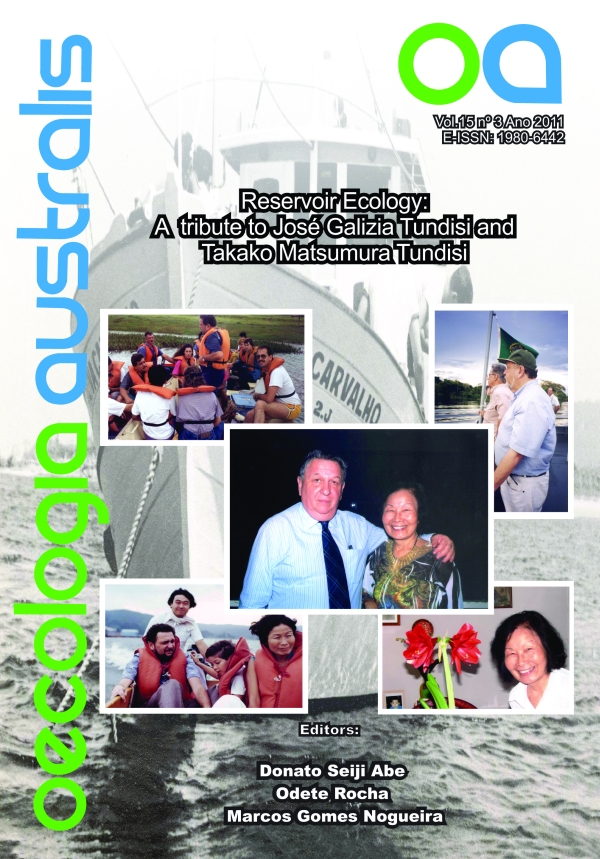CARACTERIZAÇÃO DA ATIVIDADE BACTERIANA E CLASSIFICAÇÃO TRÓFICA DO SEDIMENTO SUPERFICIAL DO RESERVATÓRIO DE FUNIL
Keywords:
Atividade metabólica bacteriana, biopolímeros, estado trófico, reservatório de FunilAbstract
CHARACTERIZATION OF BACTERIAL METABOLISM AND CLASSIFICATION OF THE TROPHIC STATE OF THE SUPERFICIAL SEDIMENT IN FUNIL RESERVOIR. The Funil reservoir works as receiver of the particulate matter brought from the upper reaches of the Rio Paraiba do Sul. When the particulate matter arrives in the reservoir, it tends to settle. The settled, particulate matter rich in nutrients and organic matter, act as a shelter for a variety of organisms including bacteria. Therefore, the aims of this work were the characterization of the acting bacterial process through the number of bacteria (autotrophic and heterotrophic), the metabolic and enzymatic activities, and the characterization of the trophic state of the superficial sediments of the Funil reservoir trough the biopolymeric composition (lipids, proteins and carbohydrates). Samples of superficial sediments were collected at the entrance of the reservoir (A), at the central body (B) and near the dam of the reservoir (C), in the period of low rainfall. The physical and chemical parameters were obtained in situ. The particle size analysis of the sediments showed the predominance of the silt-clay fraction. A high number of autotrophic bacteria were found in the central body (B) of the reservoir (1.77x106 cells.cm-3) and near the dam of the Funil reservoir (1.29x106 cells.cm-3). The number of heterotrophic bacteria was greater than the number of autotrophic bacteria only at the entrance of the reservoir. The most probable number of bacterial respiratory activity (MPN_BRA) showed the predominance of bacteria with anaerobic metabolism (fermentative and sulfate-reducing). The activity of esterases enzymes (EST) ranged from 1.18 to 4.79µg fluorescein.g-1.h-1, and was higher at the entering of reservoir. However, the electron transport system activity (ETSA) was higher at the station near the reservoir's dam (0.004µg O2.h-1.g-1). Based on the concentrations of biopolymers (proteins and carbohydrates) the sediments were classified as meso-oligotrophic. The microbiological analysis showed that the transformation of the organic matter, that reaches the bottom of the reservoir, is necessarily preceded by hydrolysis; only then this matter will turn into monomers and oligomers which will be metabolized by bacteria.
Keywords: Metabolic bacterial activity; biopolymers; thophic classification; Funil reservoir.
Downloads
Downloads
Additional Files
- Caracterização da Atividade Bacteriana e Classificação Trófica do Sedimento Superficial do Reservatório de Funil (Português (Brasil))
- camiladebarros, OA_Chequer_Palermo & Crapez_Atividade metabólica bacteriana_Figura 1.jpg (Português (Brasil))
- camiladebarros, OA_Chequer_Palermo & Crapez_Atividade metabolica bacteriana_Figura 2.jpg (Português (Brasil))
- camiladebarros, OA_Chequer_Palermo & Crapez_Atividade metabolica bacteriana_Figura 3.jpg (Português (Brasil))


